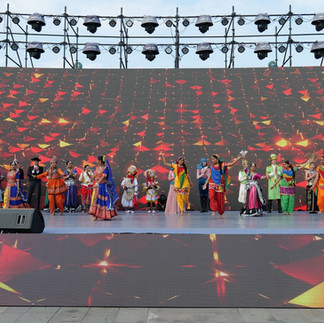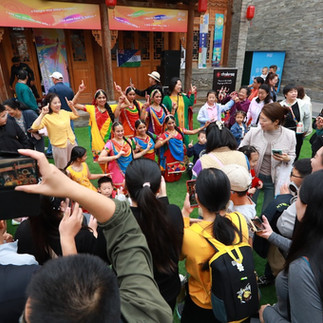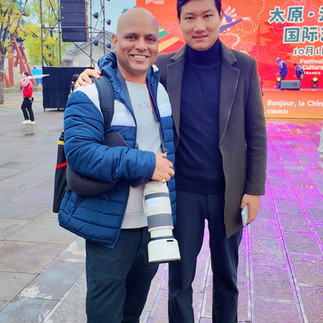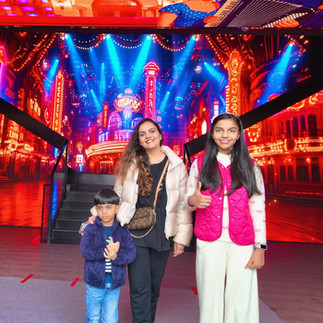Dance Beyond Borders: Chakras Performing Arts from Australia Shines in China’s Gannat International Art Festival
- Kirti Sehrawat

- Oct 11
- 3 min read
In the historic city of Taiyuan, in China’s Shanxi province, colours, rhythm, and cultural harmony came together at the Gannat International Art Festival, China Edition 2025, celebrated for the first time as part of UNESCO’s International Day of Intangible Cultural Heritage.
Among the 260 international artists from fifteen countries, one group stood out for its blend of classical grace and community spirit - Chakras Performing Arts from Newcastle, Australia. Led by founder and artistic director Savitri Naidoo, the group represented both India and Australia, bringing together students of Indian heritage who performed an expressive fusion of Bharatanatyam, folk, and contemporary dance.
For Savitri, who began her dance journey in South Africa before moving to Australia, the moment was deeply emotional.

“This has been a wonderful opportunity for my students and me,” Savitri added. “Coming from South Africa where we used dance to build bridges during apartheid, being here in China with an Indian-Australian group from Newcastle, Australia feels like completing a full circle.”
The Gannat International Art Festival, originally founded in Gannat, France, more than fifty years ago, has long been recognised for celebrating global folk and traditional arts. Its China edition, now in its third year, brings together performers from across the world, offering a stage for cultural dialogue and artistic collaboration.
The Chakras group joined workshops and shared rehearsals with performers from Bulgaria, Malaysia, Peru, and Kazakhstan, exploring how movement, costume, and rhythm can transcend language.
“The workshops were an incredible experience,” Savitri added. “We learned small but valuable things about performance and presentation that we will take back to Australia.”

Their participation was made possible through the support of Dr Vikrant Kishore, academic, filmmaker, and an Associate Professor at the University of Nottingham Ningbo China. Dr Kishore helped coordinate Chakras’ presence at the festival, strengthening cultural bridges between India, Australia, and China.
Festival Chairman Yachao Zhao, who co-created the China edition of the Gannat Festival, expressed pride in how the event has grown.
“Our dream is to make it a truly global platform where cultures meet and respect each other. Seeing artists from fifteen countries perform together shows that our hard work has paid off.”
For the families involved, the experience went far beyond the stage. Parents Sameer, Hemant and Mrinalini travelled with the team, helping with costumes and coordination, while their children performed before large audiences.
“We are grateful to the organisers and to Dr Vikrant for making this possible,” Hemant shared. “The children performed with teams from Malaysia and Peru, and it was amazing to see how they connected through dance.”
Hemant 2. Mrinalini - Parents who accompanied the Chakras Performing Arts and helped with various organisational works.
3. Wei Jianyong - Festival Dance Director
Mrinalini added that the festival offered much more than performance opportunities.
“It’s been a brilliant platform for the children,” she said. “They not only performed but learned empathy, teamwork, and the beauty of cultural exchange.”
Festival Dance Director Wei Jianyong was equally appreciative of Chakras’ artistry and professionalism.
“The Indian-Australian dancers were very creative,” he said. “Their fusion of classical and contemporary movement was deeply appreciated by the Chinese audience.”
The week-long event transformed Taiyuan’s ancient streets into a stage of music, art, and community celebration. Artists performed across open courtyards and cultural venues, interacting directly with the audience in true festival spirit.
For Chakras, this first international performance was not only an artistic milestone but also a statement of what the Indian-Australian community can contribute to global culture. It affirmed that art continues to unite people across borders and traditions.
As the lights faded and the final applause echoed through Taiyuan’s historic city walls, one thing was clear: the dance of Chakras was more than a performance. It was a story of connection, learning, and the living spirit of heritage, one that continues to move across generations and geographies.







































Comments